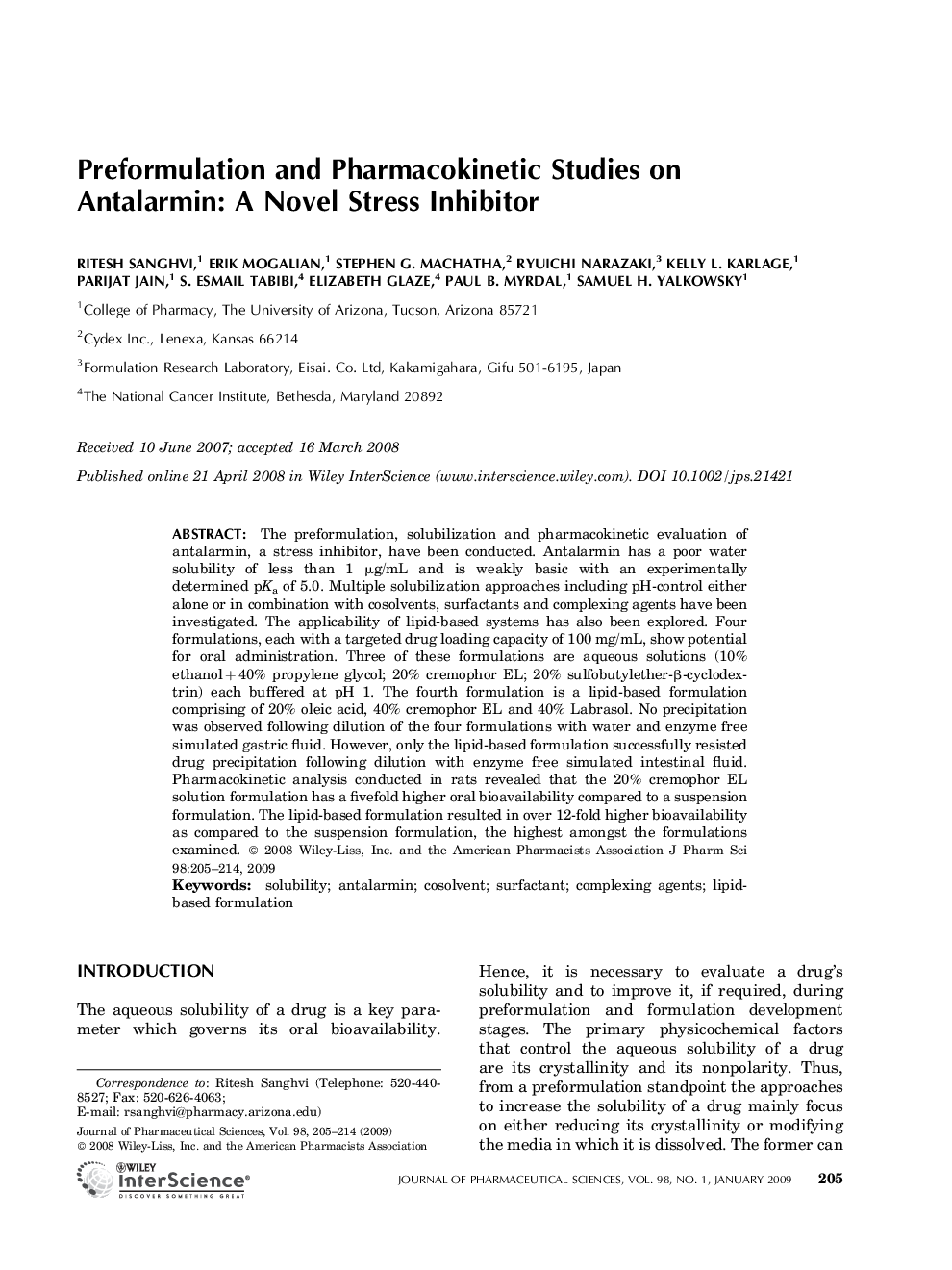| Article ID | Journal | Published Year | Pages | File Type |
|---|---|---|---|---|
| 2487224 | Journal of Pharmaceutical Sciences | 2009 | 10 Pages |
Abstract
The preformulation, solubilization and pharmacokinetic evaluation of antalarmin, a stress inhibitor, have been conducted. Antalarmin has a poor water solubility of less than 1 µg/mL and is weakly basic with an experimentally determined pKa of 5.0. Multiple solubilization approaches including pH-control either alone or in combination with cosolvents, surfactants and complexing agents have been investigated. The applicability of lipid-based systems has also been explored. Four formulations, each with a targeted drug loading capacity of 100 mg/mL, show potential for oral administration. Three of these formulations are aqueous solutions (10% ethanolâ+â40% propylene glycol; 20% cremophor EL; 20% sulfobutylether-β-cyclodextrin) each buffered at pH 1. The fourth formulation is a lipid-based formulation comprising of 20% oleic acid, 40% cremophor EL and 40% Labrasol. No precipitation was observed following dilution of the four formulations with water and enzyme free simulated gastric fluid. However, only the lipid-based formulation successfully resisted drug precipitation following dilution with enzyme free simulated intestinal fluid. Pharmacokinetic analysis conducted in rats revealed that the 20% cremophor EL solution formulation has a fivefold higher oral bioavailability compared to a suspension formulation. The lipid-based formulation resulted in over 12-fold higher bioavailability as compared to the suspension formulation, the highest amongst the formulations examined.
Related Topics
Health Sciences
Pharmacology, Toxicology and Pharmaceutical Science
Drug Discovery
Authors
Ritesh Sanghvi, Erik Mogalian, Stephen G. Machatha, Ryuichi Narazaki, Kelly L. Karlage, Parijat Jain, S.Esmail Tabibi, Elizabeth Glaze, Paul B. Myrdal, Samuel H. Yalkowsky,
